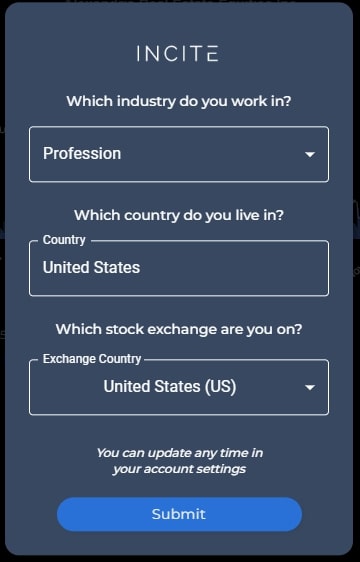If you are using trading platforms that use AI to predict and analyze stock prices privacy and security are key. These platforms usually deal with sensitive personal and financial data. In the event of a data breach or misuse, it could lead to financial and reputational damage. Here are the 10 best suggestions for evaluating security and privacy features of these platforms.
1. Examine Data Encryption
Data encryption during transit Verify that the platform is using secured protocols (e.g. TLS/SSL), which encrypts the data that is transferred between your device as well as their servers.
Verify encryption at the time of rest. Verify that sensitive data is encrypted on the platform's servers using strong standards of encryption (e.g. AES-128).
End-to-end encrypted communication: Make sure that the service you're using provides encryption that is complete for sensitive data.
2. Review Authentication Methods
Two-factor verification (copyright) : Check whether the platform is compatible with copyright to provide an additional security layer.
Check the biometric authentication options for mobile apps (e.g. facial recognition fingerprint, facial recognition).
Password policies: Find out whether the platform has strict policies on passwords (e.g. minimum length and complexity requirements).
3. Check for Regulatory Compliance
Financial regulations: Make sure the platform is compliant with pertinent financial laws (e.g., SEC, FINRA, MiFID II).
Data protection laws. Check compliance with privacy laws for your location (e.g. CCPA, GDPR) if it is applicable.
Audit certifications: Check if your platform has been examined by a third-party auditor or certifications.
Review Controls for Access to Data
Role-based access: Ensure that the platform has access control based on role (RBAC) to restrict data access to authorized users.
Verify whether you can create permissions with granular levels for various team members.
Activity monitoring: Find out if the platform monitors and logs the user's behavior to detect suspicious behavior.
5. Assess Vulnerability Management
Regular updates: Ensure the platform is regularly updating its software in order to address weaknesses.
Penetration testing : Check to determine if the platform has been regularly tested for penetration to identify and rectify security flaws.
Bug bounty programs: Check whether your platform offers an incentive program that rewards external security experts for identifying vulnerabilities.
6. Evaluate Data Privacy Policies
Transparency - Read the privacy policy of the platform to know how data is gathered, shared and used.
Data minimization is the method of ensuring that only data needed for the functionality of a platform is collected by the platform.
Third-party sharing : Review the policy of sharing data on the platform and terms.
7. Verify Secure API Usage
API security: Make sure that the platform's API utilizes authenticated methods that are secure (e.g., OAuth, API keys) and secures data exchanges.
Limiting the rate. Examine the API's rate limiter to avoid abuse.
Verify access logs. Verify that the platform monitors API usage and records it for monitoring.
8. Review the Recovery of Incidents and Response
Incident response plan: Ensure that the platform has a clear plan for responding to incidents such as security breaches or data breaches.
Examine the platform's policies on notification to determine if it informs users quickly if there is a breach of security.
Data backups: Check if the platform regularly backs up data and has a disaster recovery strategy in place.
9. Review the physical security measures
Data center Security: Ensure servers are located in secure data centers, with physical security measures (e.g., monitoring, access control).
Redundancy Check the redundant platforms of the platform in order to ensure the availability of data in case the hardware fails.
Geographic distribution: To boost resilience, check if the data is distributed across several geographic locations.
10. Test privacy safeguards for users
Data deletion: Ensure the platform permits you to erase your data permanently if you stop making use of the platform.
Privacy settings: Make sure your platform has privacy settings to allow you to control which data is visible or shared.
Anonymization: Determine if your data is encrypted to allow machine learning or analytics.
Bonus Tips
User reviews and reputation - Research the reviews and feedback of users in order to get a feel for how secure and private a platform.
Trial period: You can use a demo or free trial to test out the security and privacy controls.
Customer Support: Check that the platform has the capacity to offer a solid support service in the event of security issues.
Check these points to determine the privacy and security level of AI platforms for stock prediction and analysis. In this way your personal information and financial details are safe. A secure platform not just secures your assets, but also creates trust in their service. Read the best investment ai for website tips including options ai, ai investment platform, ai trade, chart ai trading assistant, ai for stock predictions, ai investing platform, stock ai, ai trading tools, AI stocks, AI stock market and more.

Top 10 Tips On Risk Management Of Ai Trading Platforms That Predict/Analyze Stock Prices
Risk management plays an essential function in any AI-powered stock trading platform. It protects your capital by limiting losses that could occur and assists you in maximizing profits. A platform with strong risk management tools can help you navigate uncertain markets, and make educated decisions. Here are 10 tips on how you can evaluate the platform's risk management capabilities.
1. Examine Stop-Loss features and Take Profit Features
Flexible settings: Make sure you set your maximum take-profit and stop-loss levels for certain trades.
Check to see if your platform supports trailing stop, which adjusts automatically as the market moves towards your.
Guaranteed stops: Check whether the platform provides guarantees on stop-loss orders that assure that your trade is completed at the price you specified even in markets that are volatile.
2. Calculate the Size of Position Tools
Fixed amount. Make sure you can define your position sizes as the fixed dollar amount.
Percentage in your portfolio The best way to manage your risk by establishing position sizes proportionally as per percentage.
Risk-reward ratio: Determine whether the platform can set risk-reward ratios on individual trades or strategies.
3. Look for Diversification Aid
Multi-asset Trading to diversify your investment portfolio, ensure that the trading platform you select allows trading across multiple asset classes.
Sector allocation Check to see whether there are any tools that can be used to manage and monitor sector exposure.
Geographic diversification. Verify whether the platform is able to trade on international markets and spread geographic risk.
4. Assess Margin and Leverage Controls
Margin requirements. Be sure to know the requirements for margin prior to trading.
Examine whether you can establish limit on leverage to limit your risk exposure.
Margin call notifications: Make sure that the platform sends out timely margin call notifications to prevent account liquidation.
5. Assessment Risk Analytics and reporting
Risk metrics: Ensure that the platform offers important risk indicators to your portfolio (e.g. Value at Risk (VaR) Sharpe ratio and drawdown).
Analysis of scenarios: Make sure that the platform allows you to test different scenarios of the market in order to evaluate the risk.
Performance reports: Check whether you can obtain detailed reports on performance from the platform, including the risk-adjusted outcomes.
6. Check for Real-Time Risk Monitoring
Monitoring your portfolio. Be sure your platform can monitor the risk in real-time of your portfolio.
Alerts and notifications: Check the platform's ability to provide real-time alerts for situations that could be risky (e.g. breached margins and stop loss triggers).
Risk dashboards: Make sure your platform offers an adjustable risk dashboard that gives you an entire picture of your personal profile.
7. Evaluation of Backtesting and Stress Testing
Stress testing: Make sure whether the platform allows you to test your portfolios or strategies during extreme market conditions.
Backtesting Check if the platform allows backtesting using historical data to assess the performance and risk.
Monte Carlo simulators: Verify that the software is using Monte Carlo to simulate a variety of possible outcomes to allow you to evaluate the risk.
8. Verify Compliance with Risk Management Regulations
Check for regulatory compliance: Make sure that the platform is compliant with relevant risk-management regulations (e.g. MiFID II, Reg T, in the U.S.).
Best execution: Verify that the platform follows best execution practices. Trades are executed at the lowest price that is possible in order to reduce the chance of slippage.
Transparency Examine the transparency of the platform and transparency in the disclosure of risks.
9. Verify that the risk parameters are controlled by the user.
Custom Risk Rules: Make sure you have the ability to create custom rules for risk management (e.g. the maximum amount of loss per day, a certain size of tradable position).
Automated Risk Controls: Determine whether the platform has the capability to automate the enforcement of risk management guidelines in accordance with predetermined parameters.
Manual overrides: Check whether the platform permits manual overrides of automated risk control in the event of emergencies.
Study Case Studies, User Feedback, and Case Studies
User reviews: Research feedback from customers to evaluate the platform's efficiency in managing risk.
Case studies: Look for case studies or testimonials that highlight the platform's capabilities in the field of risk management.
Forums for community members: Find out if there's an active community of traders that share advice and strategies for risk management.
Bonus Tips
Trial period: Take advantage of an unpaid trial or demo to test the risk management capabilities of the platform in real-world scenarios.
Customer support: Make sure the platform offers a solid assistance for any questions or issues that are related to risk management.
Educational resources - Find out whether the platform provides instructional resources and videos on risk management best practice.
Check out these suggestions to determine the risk management abilities of AI trading platforms that predict/analyze stock prices. Choose a platform with a high quality of risk-management and you will reduce your losses. To manage volatile markets and achieve long-term success in trading it is essential to use a robust software for managing risk. Read the best AI stock analysis for more info including stocks ai, AI stock trader, AI stock price prediction, ai copyright signals, ai trading tool, AI stock analysis, AI stock trader, free AI stock picker, investing with ai, best stock prediction website and more.
